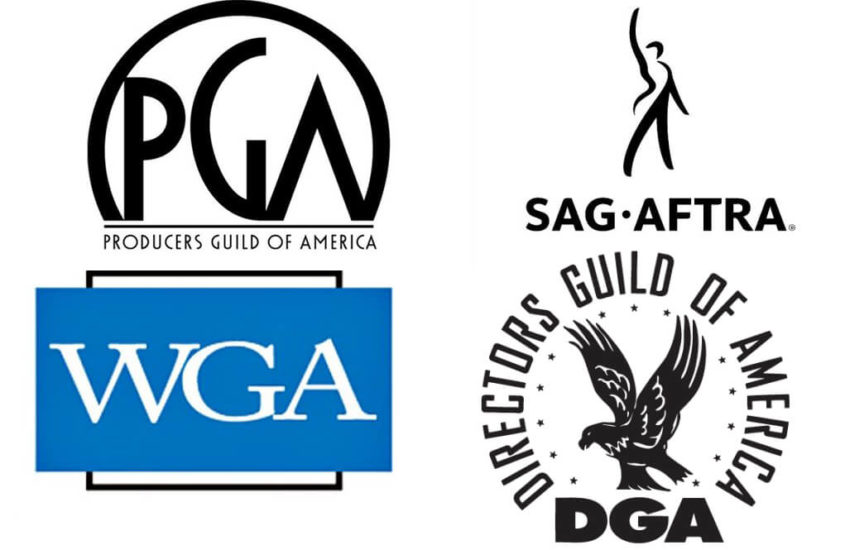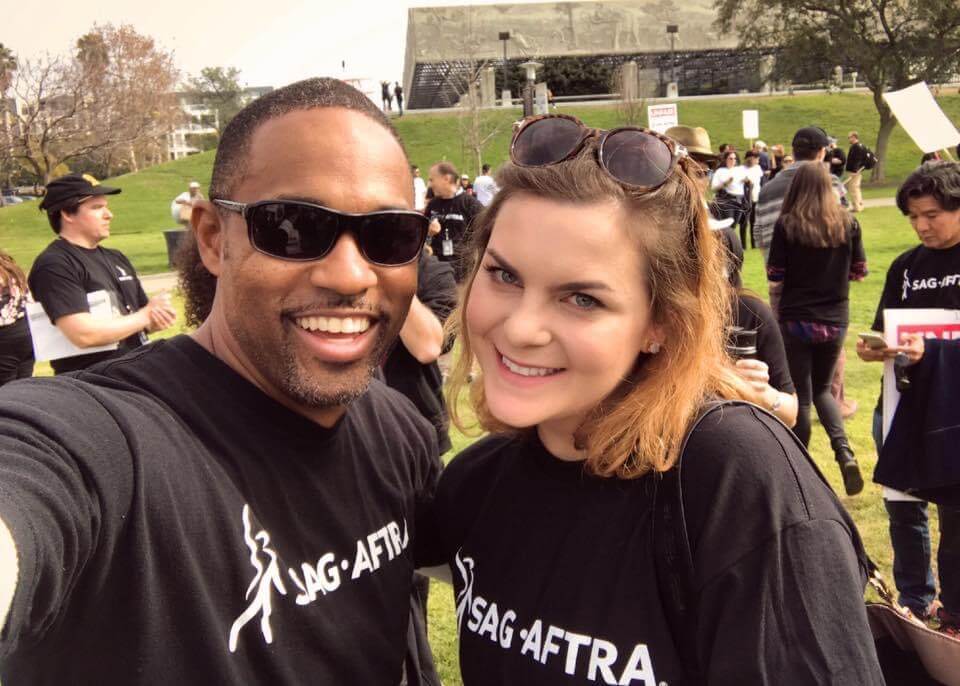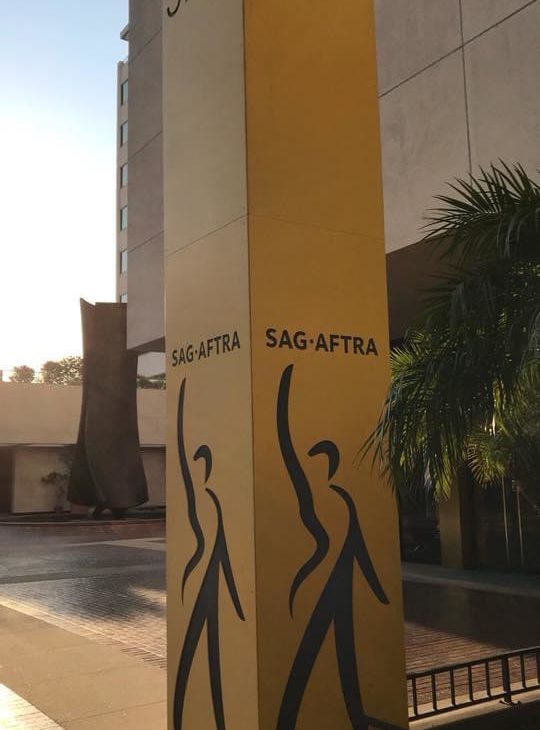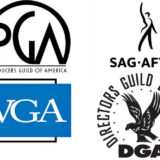Hollywood Guilds

Let’s talk about the probably most prolific and influential worker unions and the role they are playing in the industry.
With yet another union strike scare, this time by IATSE (i.e. International Alliance of Theatrical Stage Employees), I thought it made sense to provide some cursory outline about the workers’ representatives within the entertainment industry including some legal background.

MINIMUM BASIC AGREEMENT – NEGOTIATIONS & STRIKES
The concept is a simple one: unions act on behalf of their members as negotiator with employers and bargain collectively over the wages and working conditions (unions are exempt from the Antitrust Laws). Consequently, unions aim for exclusive bargaining power which can only be achieved by a strong membership. Member loyalty translates means leverage at the negotiation table. The more loyal workers the more leverage the guild can build. Thus loyalty of worker’s membership is crucial. That way the union seeks to increase the price of labor.
For clarification purposes, here’s a bit of terminology ‘wisdom’:
“Union” is a name, while “Guilds” are a labor organizations as defined by the NLRA.
§7 NLRA (National Labor Relations Act): It provides for workers to collectively for a union and requires employers to then negotiate with the union.
The product of good faith negotiations between a union and the AMPTP –Alliance of Motion Picture and Television Producers – is called Collective Bargaining Agreement, CBA in short. The Guilds’ most extensive CBAs govern virtually all aspects of the employment and treatment of screenwriters, directing teams and actors/performers in the dramatic film and television business. There is no “Producers Union”, which means the AMPTP as negotiation partner doesn’t encompass all actual members. In fact, only the major studios and networks are actively involved in the discussions. However, all other employers/companies will be bound to the union agreements upon signature. Labor law exemption so that the employers are allowed to bargain amongst each other and represent the AMPTP = multi-employment bargaining units.
Sometimes, employers and unions reach an impasse and negotiations lead to a dead-end. Then, as a likely scenario employees may strike or at least announce they’ll stop working in order to gain concessions from management.

WHAT DO THE GUILDS DO – SCOPE?
There are two kinds of unions: above (DGA; SAG-AFTRA; WGAW/WGAE) and below the line unions (crew members, such as IATSE, Teamsters local 399 representing drivers of movable things).
In general, a union’s work area jurisdiction describes for whom it is entitled to negotiate. The jurisdiction must be agreed upon and included in the CBA with the employer. Where there is no specific provision in the contract determining which initial works are covered (“made for”) there is no jurisdiction. Therefore, whenever there is a new medium (i.e. new production, distribution or exhibition technology) that is not covered by contract a union seeks to renegotiate the work area with the employer to represent the “new” group of workers and the employer recognizes the union to negotiate exclusively on behalf of those workers.

Additionally, the guild will persist on provisions dealing with “library products”. In order for employees to benefit from a work’s re-use on a subsequent medium the union will persist on receiving residuals, which also must be embodied in the contract.
As the exclusive representative, purpose and mission of the guilds is to promote and protect the economic (monetary interests) as well as professional/artistic (e.g. director’s first cut-right) interests of their members.
- Negotiation of CBAs (every 3 to 4 years): A union negotiates minimum terms and conditions, “scale”, and the members CANNOT waive minimums! Top talent however, often strikes deals going way beyond those minimums, “overscale”.
- Grievance and arbitration: Grievances arising out of CBA interpretation are resolved via arbitration proceedings where arbitrators render a final decision which is BINDING to the parties.
- Enforcement & administration of CBAs through arbitration and before federal courts (all remedies must be exhausted before taking action, meaning that there must be an NLRB-arbitration decision before filing a grievance in federal court). The National Labor Relations Board is an “independent federal agency that protects the right of private sector employees.”
- Unfair labor practice complaints.
- Lobbying of governments (local, state, federal and international gov and influential quasi gov (e.g. WIPO) bodies.
- “Regulation” of agents: almost everybody who is covered by the guilds requires to be represented by an agent. An agent is someone who procures employment for their client (agents need to become signatories to the CBAs if they want to work for a union member. Those is the so-called “agent franchise agreement.”
WHY JOIN A GUILD?
Generally, to be hired on a union production one must gain credits in order to get the membership card. While a membership certainly doesn’t come for free (initiation fees and dues apply) benefits of such a member ship include the following:
- Members can only be hired subject to a CBA’s minimums.
- Regarding the WGA, “credits are determined per WGA” in PSAs (i.e. a Personal Service aAgreement). With residuals (see below) following credits, only a writer who receives credit will also earn residuals. In a non-union deal though, credits must be negotiated.
- Members receive residuals (approx. 20-30% of a talent’s income).
- Pension & Health payments (companies have to add an extra 18.5% for the health plan).
- Talent agent franchise agreements.
- WGA registration of a writer’s work of authorship: in a potential dispute about writing ownership it is not evidence of copyright ownership or priority per se, but it can be used an item of evidence.
- Inclusion to Hollywood’s “film society”; screenings; guild awards.
RESIDUALLS
Union-negotiated additional compensation from an employer (e.g. producer, ad agency or advertiser), studio or distributor to or for the benefit of directors, writers, actors (principal performers), musicians or crew that are made when union-covered entertainment product/commercials are rerun in the same medium the project was made for, or reused in different media.
In order for residuals to apply, the employer must be a signatory to the respective guild, whereas an employee does not need to be a union member.
There are different types of residuals, most of them are backend participation and calculated as a percentage of gross receipts (never of net profits). There are also models where residuals are fixed, or a specified dollar amount, or a hybrid. Either way, such payments serve as additional income stream.





Comments are closed.